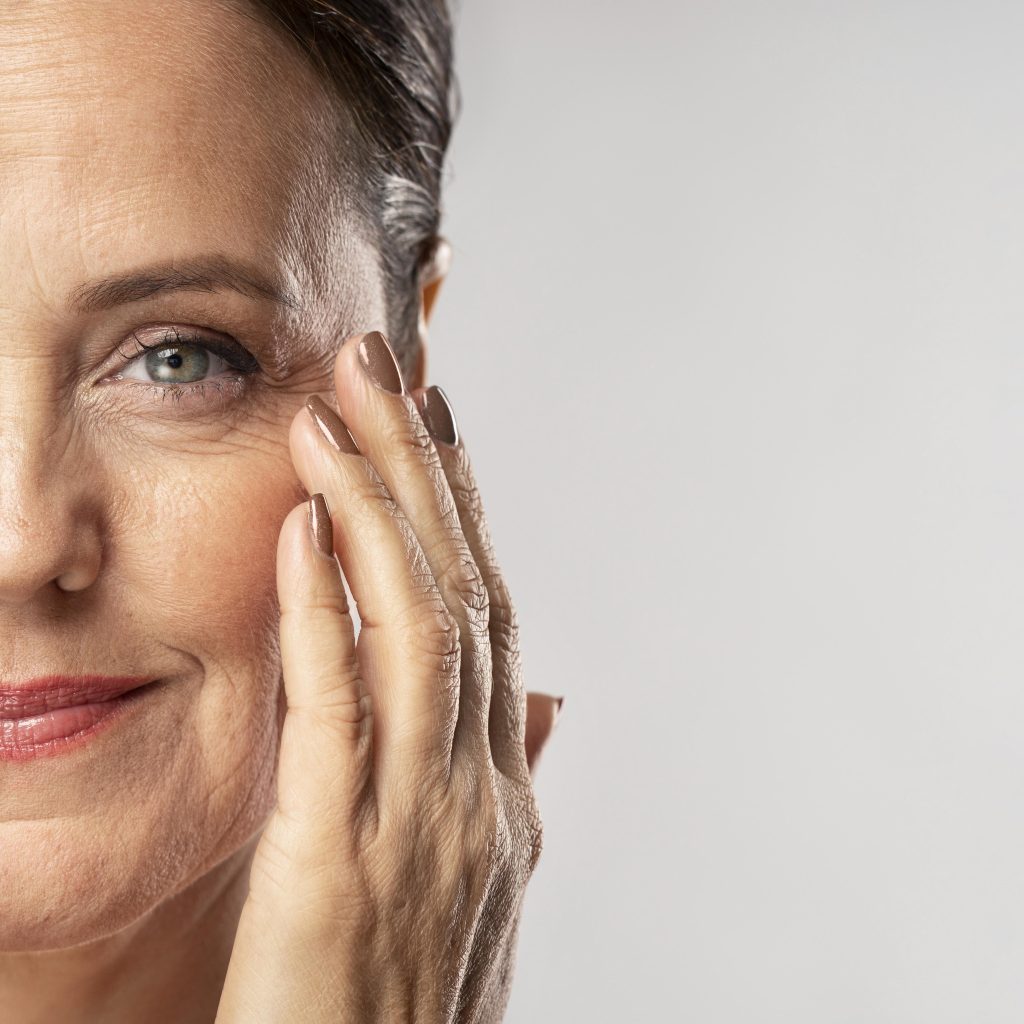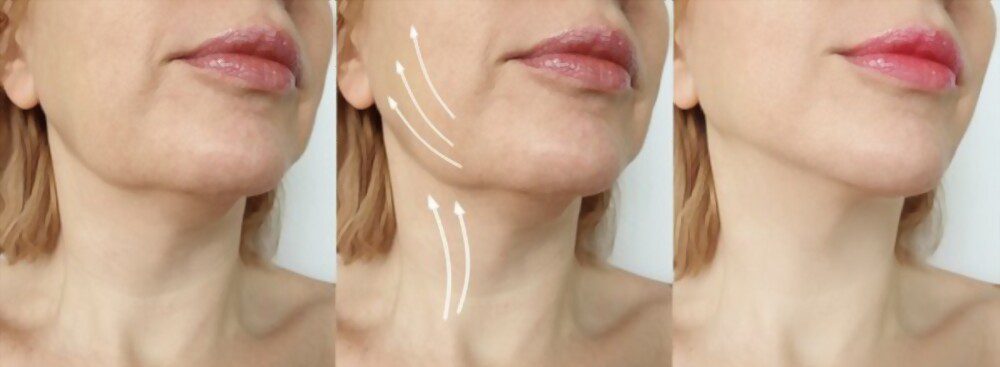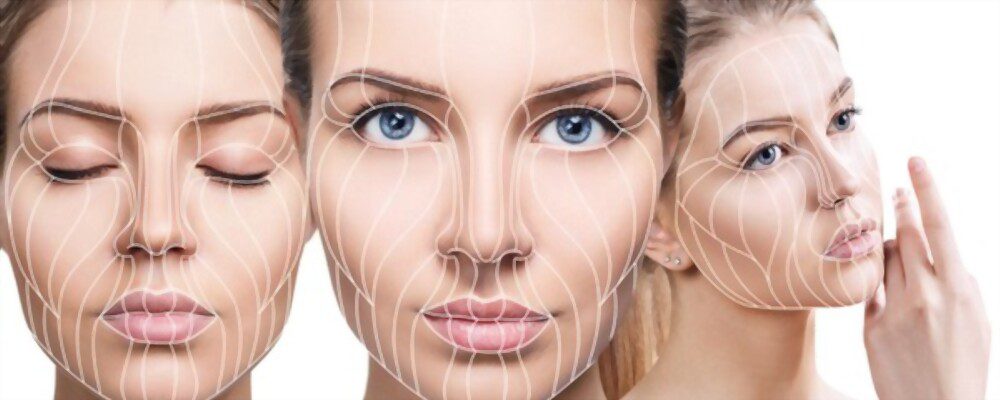
Deep Plane Face-Lift Operation
Facelift can be defined as the surgical correction of anatomical changes in various parts of the face caused by aging, gravity, genetic and environmental factors. Especially the changes in the cheeks, jaw line, jowl area, neck, eyelids cause the person to have an old face appearance. The aim of the face lift operation is to achieve the change needed by the person without disturbing the natural facial features. The way to make this change permanent is to understand the aging face syndrome correctly and to use the right methods. It is not possible to correct the sagging of the subcutaneous connective tissues only by hanging or stretching the skin. For this reason, more satisfactory and permanent results can be obtained when the muscles and connective tissues attached to the facial bones are hung together with the skin as a whole in the surgical facelift procedure.
How is Deep Plan Mid-Face Lift Operation Performed?
Mid face; It is the central region of the face, which is located next to the nose and coincides with the right under the eyes. The loss of volume in the mid-face area and the sagging of the mid-face soft tissues with the effect of gravity during the aging process and the downward positioning of the cheek draw attention. This situation causes the groove between the corner of the nose and mouth, called the nasolabial sulcus, and the under-eye circles to become prominent, as well as the appearance of under-eye bags.
Deep Plane Neck Lift Surgery
For double chin removal, an incision of approximately 2 cm is made under the chin and is entered between the subcutaneous tissue and the platysma muscle. The fat layer that makes the double chin, deep underneath the platysma muscle is removed. Then the digastric muscles in the deep plane can be shaved. If the salivary glands are larger than normal in volume, reduction of the salivary glands can be added.
How is Deep Plan Mid-Face Lift Operation Performed?
The important thing in the mid-face lift operation is to release the muscle layer and other deep tissues in this region and to ensure that they are permanently suspended at higher points in order to correct the sagging on the cheek. The facial nerve (facial nerve), which provides facial facial expressions, is quite superficial. Deep plane mid-face lift operations are slightly more risky and less performed because of the facial nerve course. In the deep plan mid-face lift procedure, it is carefully worked away from the facial nerve and proceeds to the corner of the mouth and nose. In this way, it is possible to treat these areas. Later suspension procedures and skin closure techniques are the same as in the classical face lift operation.

Neck Lift Surgery and Deep Plane Jowl Lift
The neck skin is a thin skin and is located on a very thin muscle called the platysma. With aging, this muscle loses its tension and begins to sag with the effect of gravity, and wrinkles develop on the neck skin. Decrease in skin elasticity and increase in deep fat tissue in this area cause jowl formation. The loosening of the connective tissues in the neck area causes the loss of a youthful-looking straight jaw line and the formation of sagging called chin. With neck lift surgery, a chin line that provides a smooth and younger appearance is created, the jowl is removed and the neck skin is stretched. During jowl removal, it is essential to remove the deep fat tissue under the platysma muscle rather than the subcutaneous fat tissue. In liposuction procedures to remove the jowl, only a thin layer of subcutaneous adipose tissue is reduced and the jowl is tried to be removed. This process may cause irregularities under the skin, and there should never be an adequate procedure to remove the jowl.
How is Neck Lift Surgery and Skin Plane Jowl Removal Performed?
For chin removal, an incision of approximately 2 cm is made under the chin and is entered between the subcutaneous tissue and the platysma muscle. The fat layer that makes the main jowl in the deep of the platysma muscle is removed. Then digastric muscles in the deep plane can be shaved. If the salivary glands are larger than normal in volume, the salivary glands can be reduced. The deep neck tissues are stretched by incisions and stitches to the platysma muscle. When the stretching process is completed, the excess skin is removed and the incisions are closed with aesthetic sutures.


Brow Lift
With aging, the skin begins to lose its elasticity. Wrinkles and sagging are seen in different parts of the body, especially on the face. Sometimes, this appearance can be observed in young people, when genetic factors are predominant. The first signs of aging are usually seen in the eyebrow and forehead area. The sagging of the eyebrows and upper eyelids may accumulate over the eyes as we age, and may become disturbing enough to affect the aesthetic appearance and vision. The drooping of the eyebrows, which affects the facial expression very much, can also cause a tired, nervous or tense look. Eyebrow lift or temporal lift operation is performed to correct the sagging in these areas in order to make the forehead, eyebrows and upper face area look younger.
How is Eyebrow lift Operation Performed?
After preliminary examination, it is determined whether the person is suitable for this procedure. Eyebrow lifting operation should not be confused with thread lifting techniques. Surgical brow lift operation is a permanent procedure. Under general anesthesia, an incision is made just above the eyebrows, parallel to the eyebrow hairs, and a wedge-shaped skin is removed and the eyebrow is suspended upwards. Another version of brow lift is temporal lift surgery. An incision is made just 1 cm behind the hairlines and the scalp is elevated in the temporal area . The desired shape is given by pulling the eyebrow up from the scalp. This method can be applied without any surgical scars, and more permanent results are obtained compared to other procedures. Surgery duration is about 1-1.5 hours. The person can return to his social life 3-5 days after the operation. Stitches can be removed after a week. Incision scars are hidden in the border of the eyebrow line or in the scalp.

Forehead Lifting
Aging in the upper face area, which includes the forehead, eyebrows, temporal area and eyelids, appears as a component of the aging face. The mimic lines in the forehead area deepen over time and form vertical or horizontal lines. This look causes a tired and old expression. In addition, with the decrease of collagen under the skin and the loss of tightness of the muscle tissues, the forehead begins to sag downwards. With forehead lift aesthetics, mimic lines are reduced and the person looks younger. At the same time, tension is obtained by lifting the skin and subcutaneous tissue hanging down on the forehead, midline and temporal areas. Today, although it does not provide a permanent effect in the treatment of aging in the upper face, botox has become more preferable due to its ease of application and prevalence. For this reason, forehead lift operations for the frown area and forehead lines are not performed as often as before.
How is The Forehead Lift Operatıon Performed?
Forehead lift operation can be performed openly or endoscopically. This operation is usually done under general anesthesia. The skin and subcutaneous tissue of the forehead, which is freed from the skull by entering through a few incisions made through the hairline, is suspended on the bone sheath in the upper regions, and at the same time, the small muscle groups that cause us to frown and wrinkles are rendered dysfunctional. This operation can be combined with temporal and eyebrow lifting. After 1 week -10 days, the stitches are removed and the person can return to her/his daily life.
